Florida is home to some of the most snakes in the entire United States! As a state with forests, coastlines, swamps, everglades, and more, the variety and number of snakes are to be expected. One of the most common habitats in Florida is water. Whether it’s a swamp or a lake, there are bound to be snakes present. Today, we are going to take a look at Florida’s water snakes. By the end, you’ll know what a water snake is, plus be able to identify some of the most common ones. Let’s get started!
What Is A Water Snake?
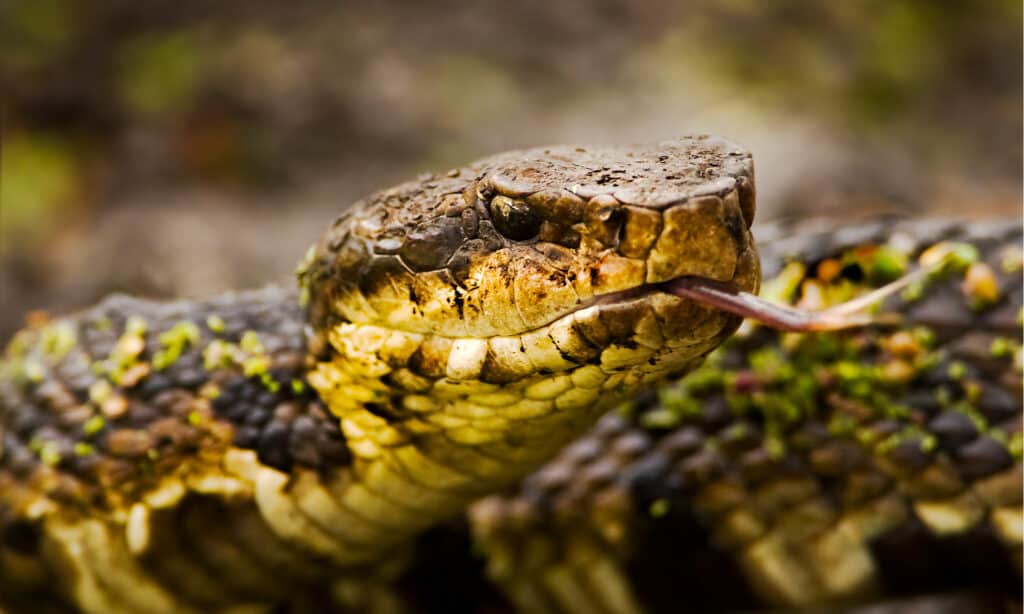
Many snakes are aquatic, but not all are classified as water snakes.
©Paul S. Wolf/Shutterstock.com
Although “water snake” seems like a rather broad description, it actually refers to a specific group of snakes in the genus Nerodia. Members of Nerodia are often called water snakes as they are semiaquatic in nature.
Water snakes are generally heavy-bodied snakes that can grow up to 4 feet long. They usually have flat, angular heads with small eyes. Most water snakes are brown, olive, or green, although their marking can be very diverse. All members of Nerodia are nonvenomous, and not all snakes that can be found near water are water snakes.
It’s important to note, however, that many people refer to any snake that is commonly found in or near water as a “water snake.” This can complicate things, but today we are going to be focusing exclusively on water snakes with the Nerodia genus because they all share similar traits. We will also cover some snakes that can easily be mistaken for water snakes, although some people would generally consider them water snakes themselves (i.e., the cottonmouth).
A List Of Water Snakes That Live In Florida
Midland Water Snake
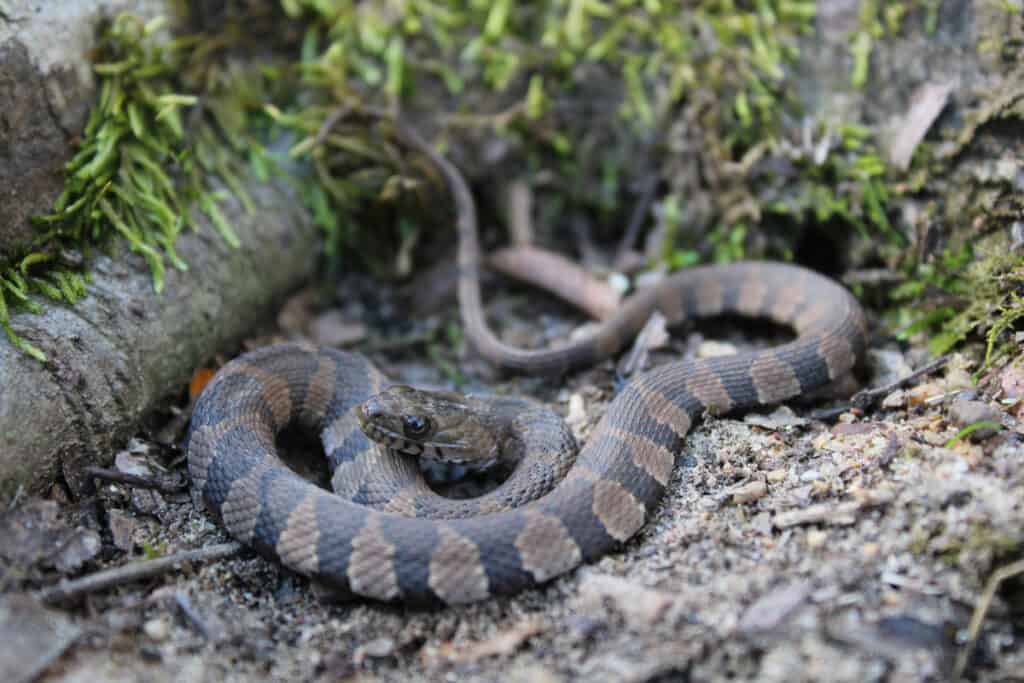
The midland water snake can be found in a small section of the Florida panhandle.
©Tucker Heptinstall/Shutterstock.com
The midland water snake (Nerodia sipedon pleuralis) is usually 24-50 inches in length. They are generally light gray, but some snakes border on the reddish side. They have large brown splotches down their back that turn more squarish as they near the tail.
Midlands watersnakes are only found in a small section of the Florida panhandle to the west.
Plain-bellied Water Snake
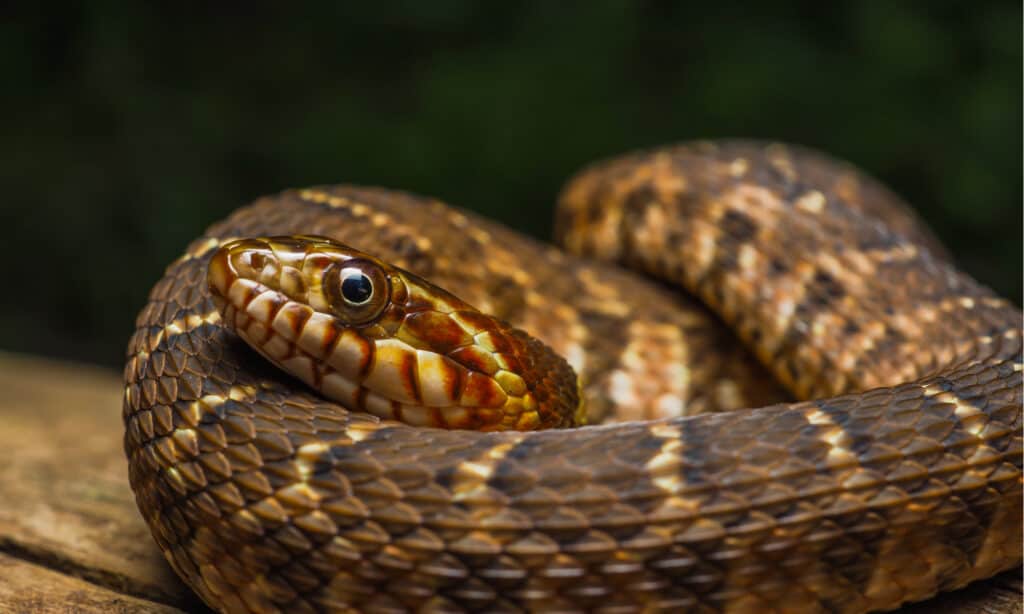
The plain-bellied watersnake can be found in the Florida panhandle and in an isolated location near the border of Georgia.
©Tyler Albertson/Shutterstock.com
The plain-bellied water snake (Nerodia erythrogaster) is usually 24-40 inches in length. They are generally solid gray, brown, olive, or black and don’t have patterning on their backs or bellies. Their bellies can be varying shades of red or yellow and are visible around the jaw.
The plain-bellied water snake can be found in the panhandle of Florida and in a few locations near the border of Georgia to the north.
Saltmarsh Watersnake
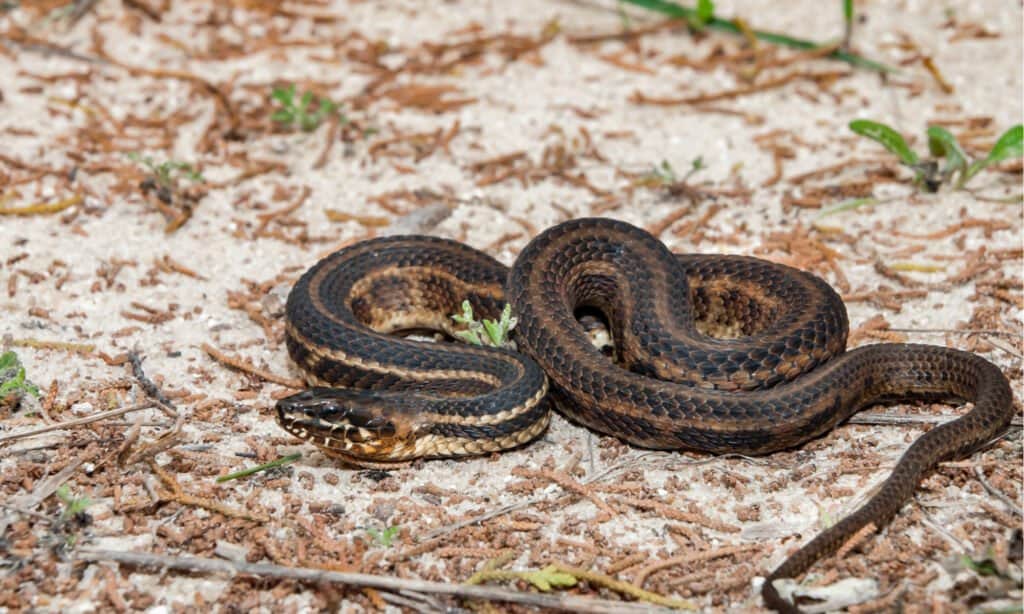
The saltmarsh watersnake can be found along the coast of Florida in habitats with brackish water.
©Jay Ondreicka/Shutterstock.com
The saltmarsh watersnake (Nerodia clarkii) can grow to 15-36 inches in length and come in three color variants. Most snakes are gray, olive, brown, or reddish-brown and have four stripes that run down their back from head to tail. Occasionally, these stripes aren’t present and are solid in color.
One of the more stunning color morphs is the red variant, a patternless orange snake that is truly stunning to look at.
The saltmarsh water snake can be found along the entire coast of Florida near salty marshes, bogs, tidal zones, and mudflats.
Southern Watersnake
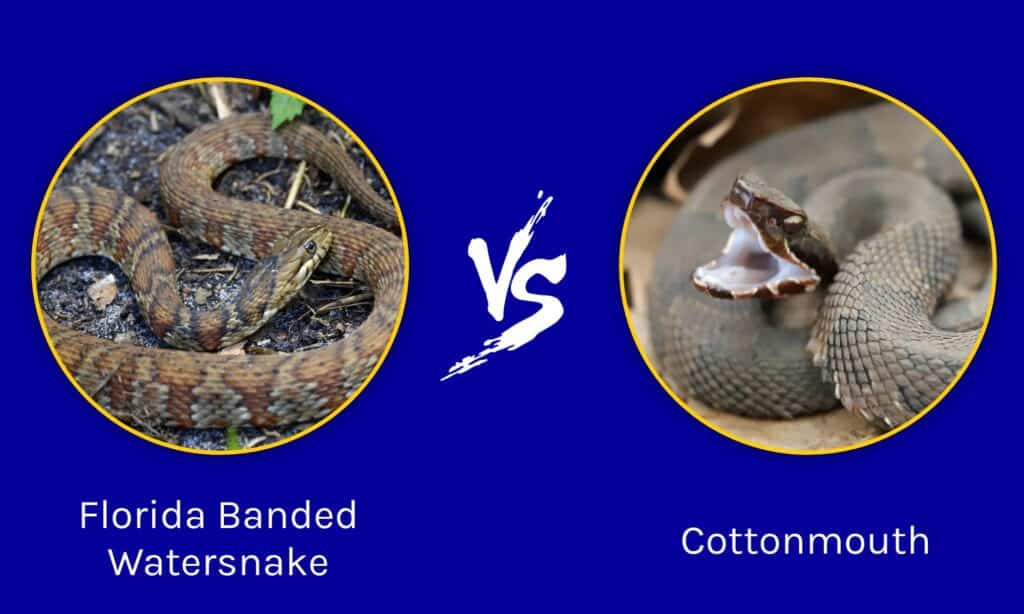
Southern watersnakes (Nerodia fasciata) generally grow 24-48 inches in length. They are typically gray or brown and have brown or reddish-brown bands down the length of their bodies. In some places, these snakes are darker, making the pattern hard to distinguish. They often go by other names, including the banded watersnake or Florida watersnake.
The southern watersnake can be found across the entirety of Florida and lives around any source of freshwater.
Brown Watersnake
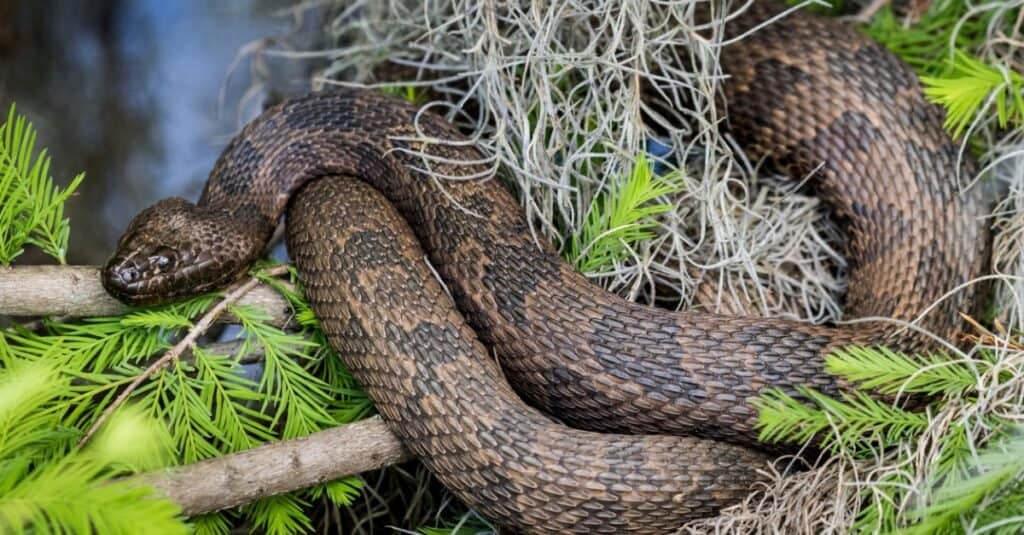
The brown watersnake can be found across Florida and rarely leaves sight of freshwater.
©iStock.com/csraphotography
The brown watersnake (Nerodia taxispilota) generally grows to 30-60 inches in length. They are typically light brown or dark brown and have large brown blotches down their body in a leopard-like pattern. In darker individuals, the splotches may appear as bands down the lighter-colored sides of the body. They are often mistaken for cottonmouths and go by various names, including the water pilot, false moccasin, great water snake, pied water snake, and water rattle.
The brown watersnake can be found across the entirety of Florida and rarely leaves the water’s edge.
Florida Green Watersnake
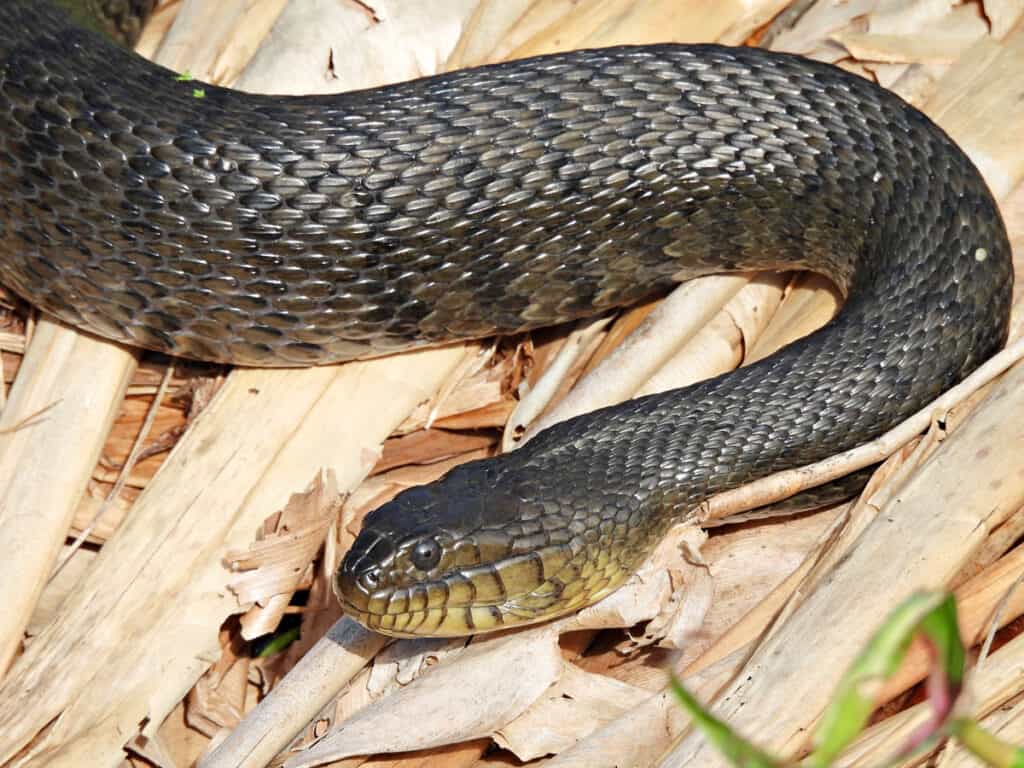
The Florida green watersnake can be found all over Florida and has a distinctly large head.
©iStock.com/passion4nature
The Florida green watersnake (Nerodia floridana) generally grows to 30-55 inches in length. These snakes are known for their strangely large heads and are usually gray, brown, gray, or brownish-red. They occasionally have dark speckling, and their bellies are white or yellow-white.
The Florida green watersnake can be found across the entirety of Florida.
Other Similar Snakes In Florida
Water snakes belonging to the genus Nerodia are usually found near water, but they aren’t the only snakes that are aquatic! Here are a few common snakes that you may encounter that could be mistaken for a water snake (or vice versa).
Queen Snake
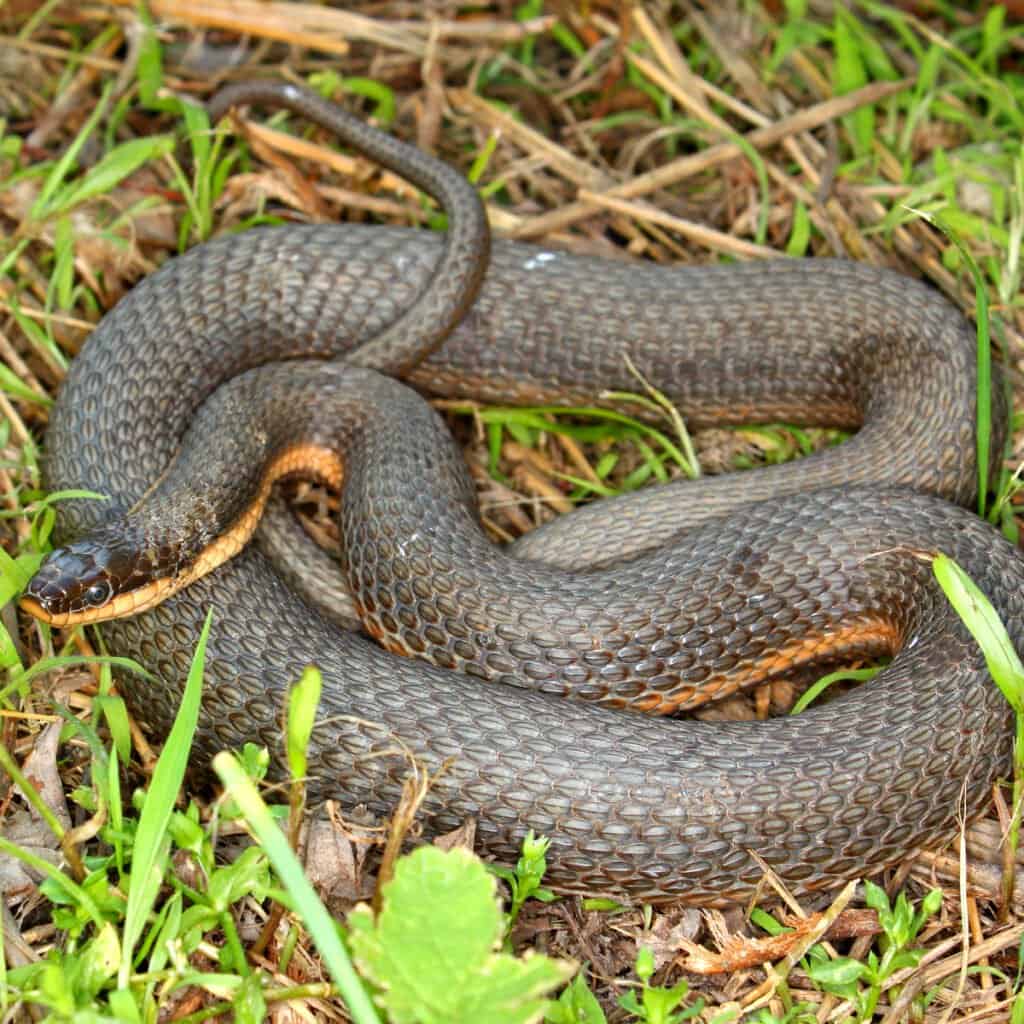
The queen snake is a nonvenomous snake that can be found across the Florida panhandle.
©Jason Patrick Ross/Shutterstock.com
The queen snake (Regina septemvittata) generally grows 24-36 inches in length. They are drab brown or olive and have two light stripes running down their sides. The easiest way to tell a queen snake is the belly, as they have four dark stripes that run from head to tail on a yellow or tan belly.
The queen snake can be found in aquatic environments in the Florida panhandle.
Cottonmouth
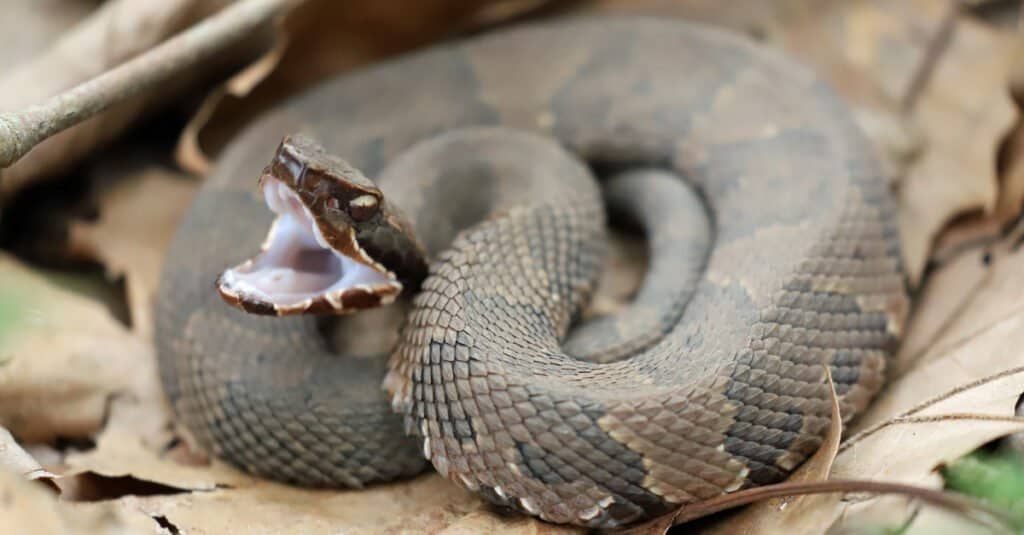
Cottonmouths are venomous snakes and can be found across the entirety of Florida.
©KF2017/Shutterstock.com
The cottonmouth (Agkistrodon piscivorus) is a stocky snake that grows up to 26-35 inches in length. They are generally gray or dark brown, but their exact coloration varies depending on the subspecies. They are famous for their bright white mouths, which they will flash at you if they feel threatened. Another easy tell for cottonmouths is the heat-sensing pits that all pit vipers have between their nose and eyes.
The northern cottonmouth can be found in the panhandle, while the Florida cottonmouth can be found across the entire state.
Other Water Animals Found In Florida
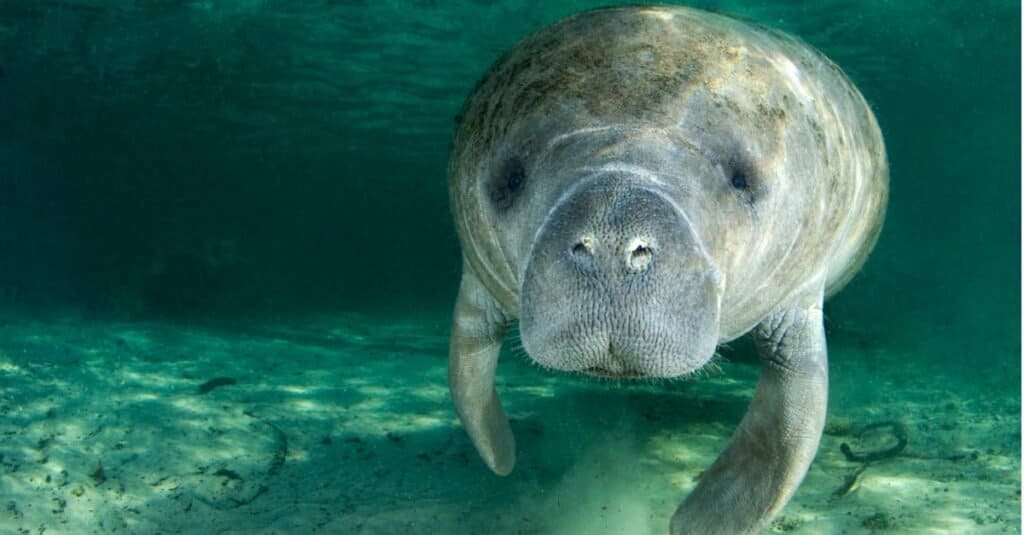
Manatees are often found in Florida’s springs.
©A Cotton Photo/Shutterstock.com
Manatees can be seen almost any time of the year in Florida but they are more commonly spotted from November to March. While they can be found almost anywhere in the warm waters throughout the state, they do spend most of their time submerged under the water and your best chance for seeing one is to head to any of Florida’s springs. Here is a list of just a few:
- Crystal River and Three Sisters Springs
- Blue Spring State Park
- Weeki Wachee State Park
These threatened sea cows, once down to less than 1,300 but now back up to between 6000 to 7500, live in herds or alone and feed on the underwater plants. They are calm, peaceful, and curious mammals that actually enjoy interaction with humans and it is very common to see them approach people to try and get a belly rub.
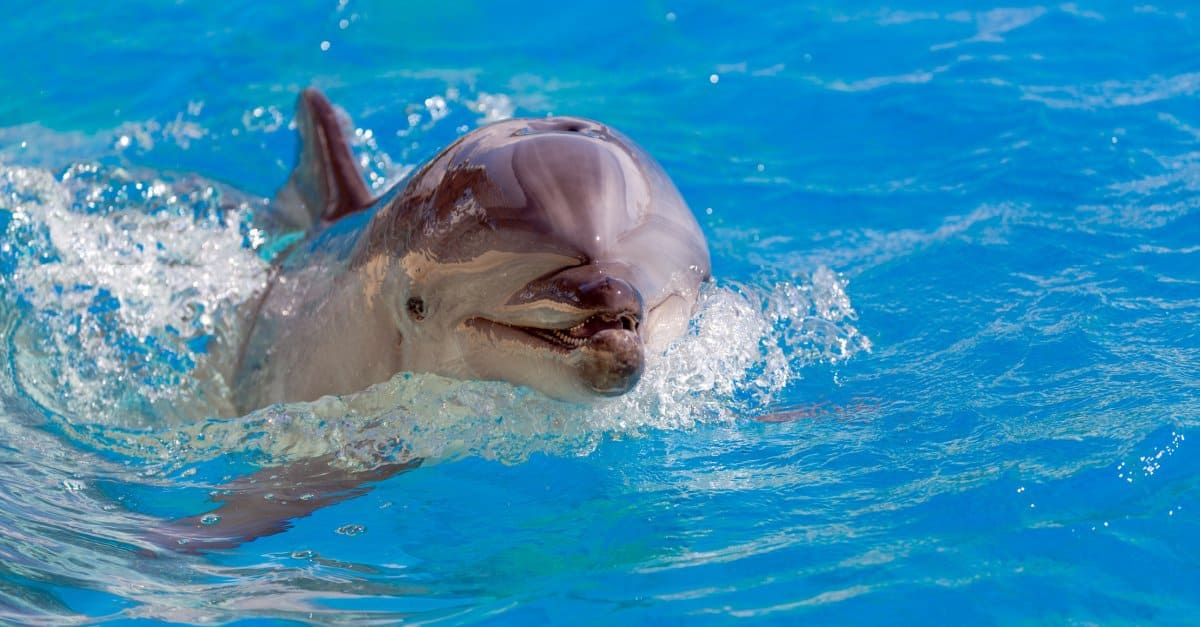
Dolphins attach a sponge to their noses and use it to protect their flesh while foraging for food.
©iStock.com/Lefteris_
The bottlenose dolphin is one of the most popular species of marine life. Known for its incredible intelligence and happy demeanor, it is also one of the friendliest animals towards humans. They are especially curious and are known to approach swimmers and follow boats. This mammal is one of the few species that has demonstrated self-recognition and quite often does things simply for fun. They can be found in both the Atlantic and Gulf coasts of Florida and are most active in the warmer months of May through August.
The photo featured at the top of this post is © Tyler Albertson/Shutterstock.com
Discover the "Monster" Snake 5X Bigger than an Anaconda
Every day A-Z Animals sends out some of the most incredible facts in the world from our free newsletter. Want to discover the 10 most beautiful snakes in the world, a "snake island" where you're never more than 3 feet from danger, or a "monster" snake 5X larger than an anaconda? Then sign up right now and you'll start receiving our daily newsletter absolutely free.
Thank you for reading! Have some feedback for us? Contact the AZ Animals editorial team.







